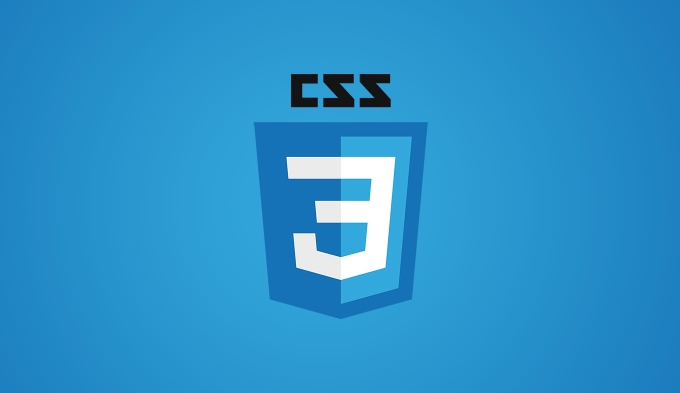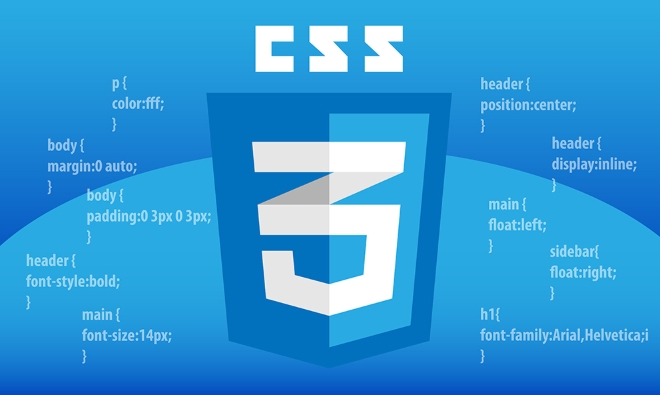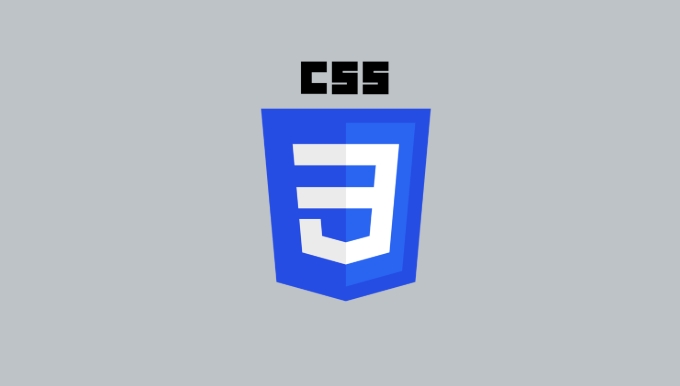Explain the usage of the `::before` and `::after` pseudo-elements
Jul 17, 2025 am 03:15 AMThe ::before and ::after pseudo-elements are used to insert decorative content before and after the element content. They need to use the content attribute and can apply CSS styles. They are often used to add icons, custom quotes, build UI components, etc. When using it, the content attribute must be set, even if it is an empty string; the visual effect can be achieved by combining positioning, colors, borders, etc.; each element can only have one ::before and one ::after; it is not suitable for important accessibility or SEO content; examples include the effect of adding arrows and hovering underscores after links.

Sure! The ::before and ::after pseudo-elements in CSS are used to insert content before or after the content of an element. They're commonly used for decorative purposes, adding small visual touches without needing extra HTML elements.

Let's break down how they work and when you might want to use them.
How to Use ::before and ::after
These pseudo-elements are added directly in your CSS using the syntax:

element::before {
content: "some text or empty string";
/* additional styles */
}
element::after {
content: "";
} The most important thing here is the content property — it must be included , even if it's just an empty string ( "" ). Without that, the pseudo-element won't show up at all.
You can apply any CSS styling to these pseudo-elements: positioning, colors, borders, backgrounds, etc.

Common Uses for ::before and ::after
These pseudo-elements are flexible and often used for things like:
- Adding icons or decorative lines
- Creating custom quotation marks
- Building UI components like toolstips or arrows (especially in conjunction with borders and transforms)
- Styling links or buttons with extra flair
For example, if you want to add a little arrow icon after every link:
a::after {
content: " ?";
color: blue;
}This would visually enhance external links or call-to-action buttons without changing the HTML structure.
Tips and Best Practices
Here are a few key points to keep in mind when working with ::before and ::after :
- ? Always include
content: ""even if you're not displaying visible text. - ? You can absolutely position them using
position: absolute, especially useful when building things like toolstips or dropdown indicators. - ? They don't affect layout unless you give them size or spacing — so they're safe to experiment with.
- ? You can only have one
::beforeand one::afterper element. - ? Avoid using them for actual content that's important for accessibility or SEO — screen readers may ignore them.
A quick example of creating a simple underline effect on hover:
a {
position: relative;
}
a::after {
content: "";
position: absolute;
left: 0;
bottom: -2px;
width: 100%;
height: 1px;
background: blue;
transform: scaleX(0);
transition: transform 0.3s ease;
}
a:hover::after {
transform: scaleX(1);
} So yeah, ::before and ::after are handy tools once you get the hang of them. Not too hard to start using, but easy to forget the content rule — that's the one thing that trips people up the most.
The above is the detailed content of Explain the usage of the `::before` and `::after` pseudo-elements. For more information, please follow other related articles on the PHP Chinese website!

Hot AI Tools

Undress AI Tool
Undress images for free

Undresser.AI Undress
AI-powered app for creating realistic nude photos

AI Clothes Remover
Online AI tool for removing clothes from photos.

Clothoff.io
AI clothes remover

Video Face Swap
Swap faces in any video effortlessly with our completely free AI face swap tool!

Hot Article

Hot Tools

Notepad++7.3.1
Easy-to-use and free code editor

SublimeText3 Chinese version
Chinese version, very easy to use

Zend Studio 13.0.1
Powerful PHP integrated development environment

Dreamweaver CS6
Visual web development tools

SublimeText3 Mac version
God-level code editing software (SublimeText3)
 How to use PHP to build social sharing functions PHP sharing interface integration practice
Jul 25, 2025 pm 08:51 PM
How to use PHP to build social sharing functions PHP sharing interface integration practice
Jul 25, 2025 pm 08:51 PM
The core method of building social sharing functions in PHP is to dynamically generate sharing links that meet the requirements of each platform. 1. First get the current page or specified URL and article information; 2. Use urlencode to encode the parameters; 3. Splice and generate sharing links according to the protocols of each platform; 4. Display links on the front end for users to click and share; 5. Dynamically generate OG tags on the page to optimize sharing content display; 6. Be sure to escape user input to prevent XSS attacks. This method does not require complex authentication, has low maintenance costs, and is suitable for most content sharing needs.
 PHP creates a blog comment system to monetize PHP comment review and anti-brush strategy
Jul 25, 2025 pm 08:27 PM
PHP creates a blog comment system to monetize PHP comment review and anti-brush strategy
Jul 25, 2025 pm 08:27 PM
1. Maximizing the commercial value of the comment system requires combining native advertising precise delivery, user paid value-added services (such as uploading pictures, top-up comments), influence incentive mechanism based on comment quality, and compliance anonymous data insight monetization; 2. The audit strategy should adopt a combination of pre-audit dynamic keyword filtering and user reporting mechanisms, supplemented by comment quality rating to achieve content hierarchical exposure; 3. Anti-brushing requires the construction of multi-layer defense: reCAPTCHAv3 sensorless verification, Honeypot honeypot field recognition robot, IP and timestamp frequency limit prevents watering, and content pattern recognition marks suspicious comments, and continuously iterate to deal with attacks.
 What are common CSS browser inconsistencies?
Jul 26, 2025 am 07:04 AM
What are common CSS browser inconsistencies?
Jul 26, 2025 am 07:04 AM
Different browsers have differences in CSS parsing, resulting in inconsistent display effects, mainly including the default style difference, box model calculation method, Flexbox and Grid layout support level, and inconsistent behavior of certain CSS attributes. 1. The default style processing is inconsistent. The solution is to use CSSReset or Normalize.css to unify the initial style; 2. The box model calculation method of the old version of IE is different. It is recommended to use box-sizing:border-box in a unified manner; 3. Flexbox and Grid perform differently in edge cases or in old versions. More tests and use Autoprefixer; 4. Some CSS attribute behaviors are inconsistent. CanIuse must be consulted and downgraded.
 How to build a PHP Nginx environment with MacOS to configure the combination of Nginx and PHP services
Jul 25, 2025 pm 08:24 PM
How to build a PHP Nginx environment with MacOS to configure the combination of Nginx and PHP services
Jul 25, 2025 pm 08:24 PM
The core role of Homebrew in the construction of Mac environment is to simplify software installation and management. 1. Homebrew automatically handles dependencies and encapsulates complex compilation and installation processes into simple commands; 2. Provides a unified software package ecosystem to ensure the standardization of software installation location and configuration; 3. Integrates service management functions, and can easily start and stop services through brewservices; 4. Convenient software upgrade and maintenance, and improves system security and functionality.
 Describe the `vertical-align` property and its typical use cases
Jul 26, 2025 am 07:35 AM
Describe the `vertical-align` property and its typical use cases
Jul 26, 2025 am 07:35 AM
Thevertical-alignpropertyinCSSalignsinlineortable-cellelementsvertically.1.Itadjustselementslikeimagesorforminputswithintextlinesusingvalueslikebaseline,middle,super,andsub.2.Intablecells,itcontrolscontentalignmentwithtop,middle,orbottomvalues,oftenu
 What is the accent-color property?
Jul 26, 2025 am 09:25 AM
What is the accent-color property?
Jul 26, 2025 am 09:25 AM
accent-color is an attribute used in CSS to customize the highlight colors of form elements such as checkboxes, radio buttons and sliders; 1. It directly changes the default color of the selected state of the form control, such as changing the blue check mark of the checkbox to red; 2. Supported elements include input boxes of type="checkbox", type="radio" and type="range"; 3. Using accent-color can avoid complex custom styles and extra DOM structures, and maintain native accessibility; 4. It is generally supported by modern browsers, and old browsers need to be downgraded; 5. Set accent-col
 How to compile SCSS to CSS?
Jul 27, 2025 am 01:58 AM
How to compile SCSS to CSS?
Jul 27, 2025 am 01:58 AM
InstallDartSassvianpmafterinstallingNode.jsusingnpminstall-gsass.2.CompileSCSStoCSSusingthecommandsassinput.scssoutput.css.3.Usesass--watchinput.scssoutput.csstoauto-compileonsave.4.Watchentirefolderswithsass--watchscss:css.5.Usepartialswith_prefixfo
 How to change text color in CSS?
Jul 27, 2025 am 04:25 AM
How to change text color in CSS?
Jul 27, 2025 am 04:25 AM
To change the text color in CSS, you need to use the color attribute; 1. Use the color attribute to set the text foreground color, supporting color names (such as red), hexadecimal codes (such as #ff0000), RGB values (such as rgb(255,0,0)), HSL values (such as hsl(0,100%,50%)), and RGBA or HSLA with transparency (such as rgba(255,0,0,0.5)); 2. You can apply colors to any element containing text, such as h1 to h6 titles, paragraph p, link a (note the color settings of different states of a:link, a:visited, a:hover, a:active), buttons, div, span, etc.; 3. Most






